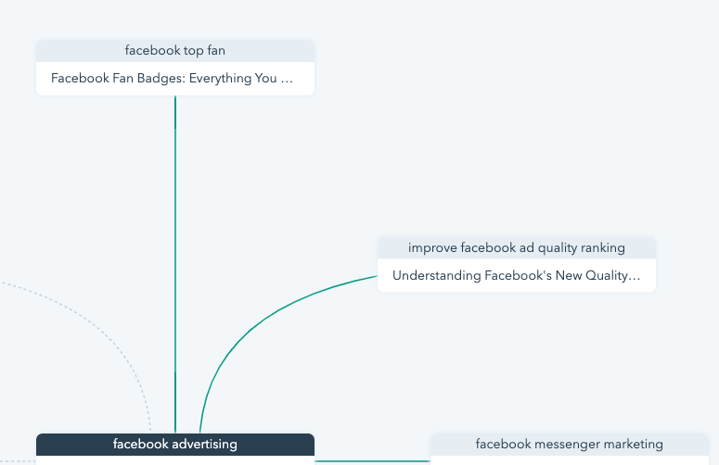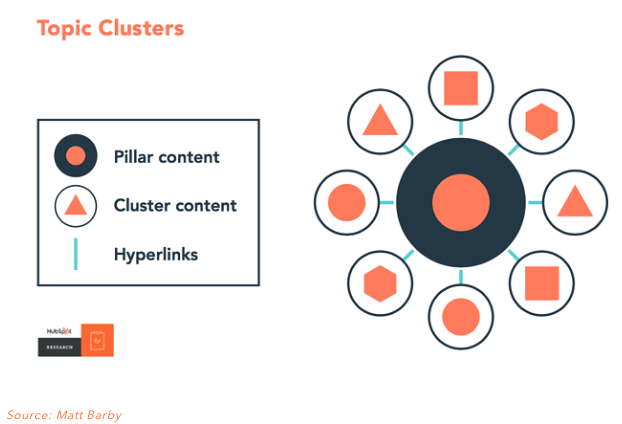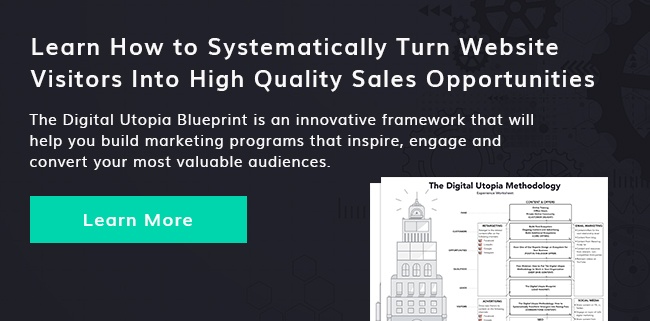Where to Begin When Creating a Content Strategy
by Digitopia | Updated Apr 4, 2022
Whether you need to breathe new life into an existing strategy or start from the drawing board, here's how you can create a stellar content strategy.
The Content Creation Landscape
Content has always been a foundational component of any marketing strategy, but the method, frequency, and style in which we create content have continually changed. A contributing factor to this change has been the evolution of how people find and consume content.
It's more important for businesses to produce content than ever before to get their brand in front of the right audience.
Search Engines like Google are one of the primary sources we turn to when looking for information. As search engines have improved their capabilities to identify intent, context, and relevancy, we have changed how we type our search queries into Google. With this advancement, we can search broader terms or topics and still see the result we desire.
This is where HubSpot's Topic Clusters come into play.
Content Topic Clusters
Content clusters are a way to organize your various pieces of content around central topics. This allows you to streamline your content strategy and address any gaps in the topics you address. Additionally, using topic clusters as a way to interlink your content can boost not only the content's individual rankings on search engine results but also the pages they are linked to.
Here are some important terms to know:
- Pillar content: the main hub of content for a certain topic. The pillar content often is a page on your website like a service page.
- Cluster content: cluster content pieces are supporting topics that relate to and lead readers to the pillar content. These address related questions your target audience has regarding the pillar page topic.
This strategy of hyperlinking surrounding cluster content to the main pillar page keeps you organized and helps your blog content SEO for those terms.
Expert Content Strategy Tip: Make sure to hyperlink your cluster content to each other in addition to hyperlinking to the pillar content. This "spiderweb" of hyperlinking shows search engines that you have a lot to offer on the pillar content topic.
Using Topic Clusters to Drive Your Content Strategy
So how do you go about creating topic clusters that fuel your content strategy and push your brand to be the authority on a given topic?
We're glad you asked. We subscribe to the methodology of identifying and targeting one pain point of a single buyer persona. In this sense, we apply the same concept to content that we apply to responsibility. If everyone is responsible, then no one is responsible. In turn, if you are writing for everyone, then you are really writing for no one.
We recently attended a local HubSpot event through SDCHUG, which featured HubSpot's Sr. Customer Success Manager, Avani Patel. This strategy aligns with Avani's thesis stated in his presentation:
Create targeted clusters of content that cover a specific topic in-depth.
If you can narrow your focus to a specific topic and create sub-topics to address common questions, hurdles, reservations, or best practices, you can become a reputable resource on the topic.
For a quick breakdown of the topic cluster concept, watch HubSpot's introduction below:
Our Expert Tips for Creating Content that Performs
Based on nearly a decade of creating high performing B2B content strategies, here are our top tips you can start using today:
- Keep a Narrow Focus. Selecting the focus of your content marketing and individual topic clusters can quickly turn into an overwhelming process. The key is to keep a narrow focus. Identify common questions around a single pain point for a single persona. Once you shift to focusing solely on helping that single individual, the process of developing a content strategy becomes more manageable.
- Don't Re-invent the Wheel. When researching competitors and looking at what content is already ranking, you may feel you should attack the problem from a different angle or think outside of the box. These concepts are great and we encourage them, but only after we have built the box. All too often, we only need to have a partner sit down and talk through the following topics. The content we can extrapolate from the session can often be worked into better content than what we are seeing online already.
- What they do and why they are great at it
- Common questions they get from clients or prospects and how they address them
- How the industry has evolved
- Clients that are a great fit
- Clients that are a poor fit
- Alternative solutions to their service or product
More often than not,
- Create Dynamic Headlines. Your blog content could be incredible, but no one will know if no one clicks on it to read. Creating a captivating title for your content that caters to your buyer persona is crucial in driving traffic to your blog.
- Link Your Content Together. This is a crucial element when creating topic clusters. You need to provide users with helpful links to related topics in your cluster so your reader can continue to engage with your content. Ideally, you are answering questions or offering insights on topics they didn't even know they were interested in yet. HubSpot's Content Cluster tool does a great job in making sure your content is linked by highlighting the connections between pieces as red if they are not linked. This, coupled with other SEO tricks like header tags, can easily boost your content in search engine results.

- Make Your Readers' Experience Great. Delight your readers with a great experience with your content. This goes beyond the obvious of ensuring there are no spelling and grammatical errors. Considering blog formatting elements like spacing, images, and bullet points can make reading easier and allow your buyer persona to better absorb the information you are providing.
- Don't Cross the Streams. If you find yourself wanting to link separate pillar pages together, then you should take a step back and validate that your focus is narrow enough. This can be a hard rule to follow, but it is important for both the user and search engine. If cross over your topics they are going to dilute each other. This makes them less likely to be the powerhouses you are wanting to create.
- Provide Your Readers Value. The best way to position yourself as a thought leader in your industry is to offer valuable content offerings to your buyer personas. Not only should your blog content provide value, but you can also provide additional resources that will further their pursuit in either acting out the tips you provided or offering more in-depth studies on the topic (i.e. white papers, webinars, infographics).
- Collaborate With Business Partners or Industry Experts. Creating content that is hosted on other, relevant websites can increase your credibility with your buyer personas. Leverage your existing business partners to post content on their websites and/or network to publishing sites that your buyer persona would frequent.
- Track your Performance. Once you create amazing content the process doesn't end there. It's important to monitor how people are interacting with your pieces and update as needed. Optimizing your content to increase performance can be as easy as conducting periodic content audits and making any necessary changes.
Key Takeaways
Things to remember when building a high performing content marketing strategy are:
- Keeping your focus narrow - identify your persona and how your product or service is going to address the single pain point they are facing.
- Picking strategic topics - think through the lens of being the best resource for people interested in your topic to position yourself as a thought leader in your industry.
- Planning content that works together - create content that supports each other and addresses every phase of the buyer journey (Awareness, Consideration, and Decision), and supports a pillar page.
The first step in creating content that performs is identifying your target persona. We've created a template for easily identifying your buyer personas so you can get started on the right foot. Download our Digital Utopia Methodology Blueprint in the link below to start creating amazing, focused, and strategic content.



